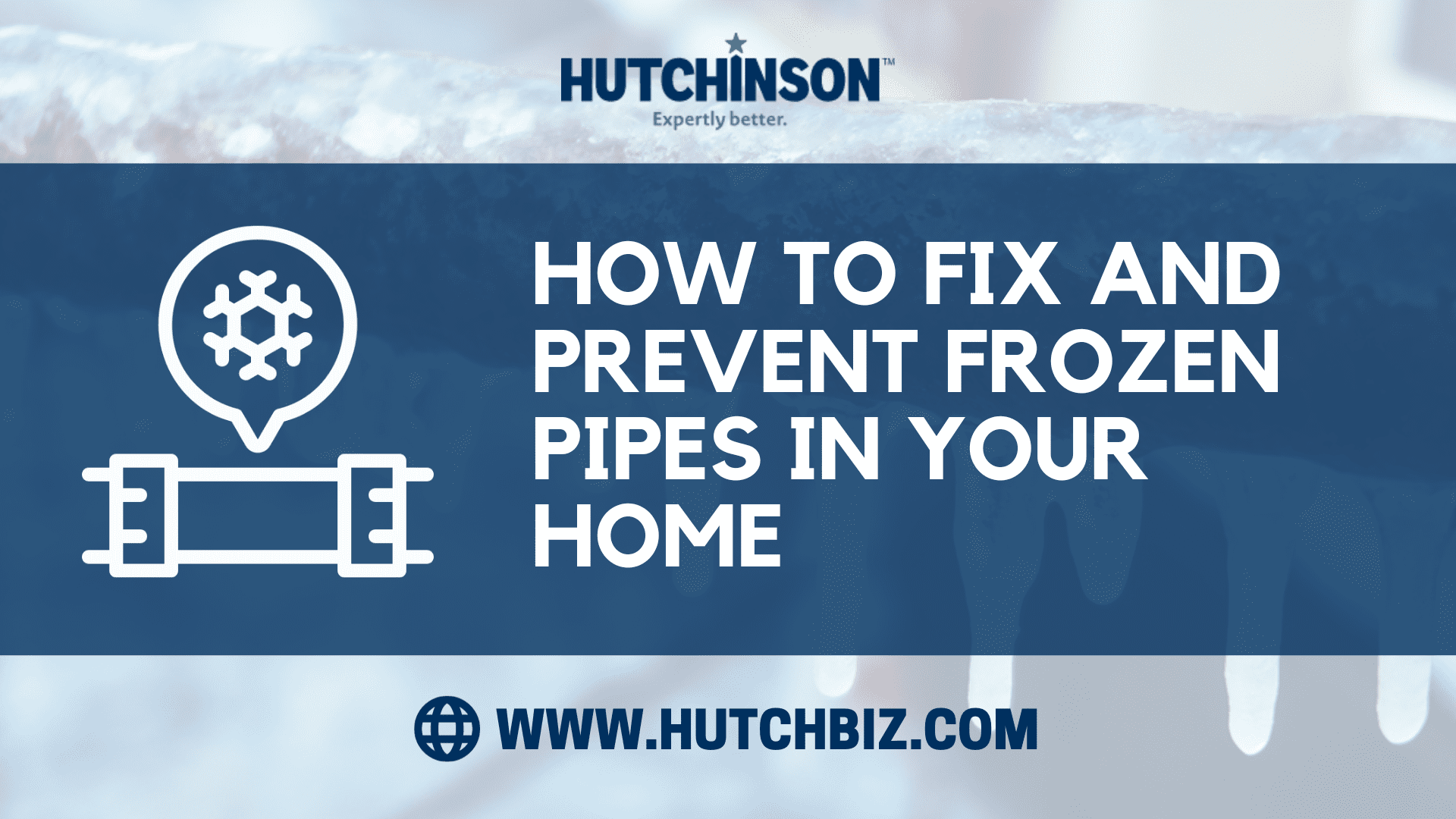
A frozen pipe can be one of the most dangerous, costly, and troublesome of winter headaches. As you probably remember from your Middle School Science class, water expands when it freezes, adding a burgeoning amount of pressure inside of your piping. Past a point, the pipe simply breaks leading to leaks, flooding, and expensive problem for you as a homeowner. If you’re planning to vacate temporarily during the winter, heed the advice from your local plumbers at Hutchinson to prevent frozen pipes in your home. By taking advantage of our plumbing wisdom, you will be able to spend your winter on the safe side.
4 Ways to Prevent Frozen Pipes This Winter
1. Get Familiar With Your Plumbing
It’s important to be generally aware of how your pipes snake themselves through the house and how to locate those water shut-off valves should you have a plumbing emergency on your hands. If you’re itching to be extra proactive, go ahead and schedule a plumbing inspection and repair, whether you’re living in Camden County or a neighboring area, to make sure there aren’t any leaks.
2. Prepare the Outside
Once all of the yard work is done for the season, make sure to shut off and drain the outdoor faucets. To help prevent your outdoor lines from bursting and disrupting your home’s plumbing system, make sure you drain out your swimming pool, sprinkler systems, and any excess water that may be lurking outside or below your home. Also, disconnect and drain any hoses. While this task seems easy enough it often ends up an afterthought for many people. If you don’t disconnect and drain all of the water from your hoses, you will not only find yourself with useless hoses once spring arrives, but it can cause your pipes to freeze, expand, and burst!
Shutting off exterior hose connection valves and having gutters cleaned can prevent ice damming. This is when snow melting off the roof refreezes because gutters are clogged with leaves or snow and ice. The water will back up and drip over the gutters, forming icicles.
3. Insulate the Pipes and Walls
While you’re finishing up your outdoor inspections and draining, insulate as much of your piping as possible, both indoors and outdoors, down basements, crawl spaces, exterior walls, and garages. You can easily pick up insulation foam that’ll keep your piping safely above 32 degrees all winter long. Many big-box or local hardware stores will sell prefabricated insulation specially designed for home water pipes. Once you determine the size you need, these pieces are easily and quickly installed anywhere you can access.
In some homes, there are water pipes running up, or near, exterior walls. To protect these pipes, it may be best to insulate the entire wall. While this may require cutting access into the walls, which will later need to be patched, pipes in these areas tend to cause more damage to homes when they do leak. In the end, the little bit of work now may save you a big headache down the road.
4. Keep Your Faucets Trickling
One of the best, and simplest tricks to guard against your frozen piping nightmare is to keep water running through your plumbing. On a night that is especially frigid, turn the faucets in your kitchen and bathrooms, allowing heat to pass into your piping.
Watch the video below for more information on preventative measures you can take to lower your chances of having frozen pipes this winter.
What to Do If Your Pipes Are Already Frozen
There are some pretty obvious signs that your water pipes are frozen. Did you turn on a sink and the water wasn’t running or flowing correctly? Are your toilets not refilling after a flush? Have you noticed a water line covered in frost or any lumps within the pipe? If your piping has yet to burst, try thawing them out as soon as possible to minimize the damage and help restore the regular functioning of your plumbing system.
-
Turn off the water supply at the stop tap or stopcock to prevent flooding once the pipe thaws. Open all the taps in your house to drain out any water already in the system. Put a pan or bucket below the frozen pipe to catch any water once the ice melts and call a plumber to inspect and fix the pipe before turning on the main water supply again.
-
Carefully apply hot or boiling water to the pipes by wrapping a hot towel around the pipe, or wrapping a dry towel around it and slowly pouring hot water over it, using a bucket to catch runoff.
-
If you don’t want boiling water splashing back on you, you can use a torch. However, this is can be dangerous for obvious reasons. Place a piece of fireproof material between the pipe and the wall for safety, and use care. Avoid soldered pipe joints. This goes without saying, but flame is not the preferred method for plastic pipes.
-
Not much of a thrill seeker? Heat lamps and hair dryers are the safest options, although they do take longer. Alternatively, try wrapping pipes in electrical heating cable and cover the cable with insulation. This technique can be used to prevent freezing, as well.
Hutchinson can help you deal with a residential plumbing emergency, including frozen pipes, any time of the day or night so you can continue to enjoy hot and cold water throughout your home. If pipes do freeze and you’re shaky about taking care of it yourself, call Hutchinson for repairs in Philadelphia and all over Southern New Jersey.

